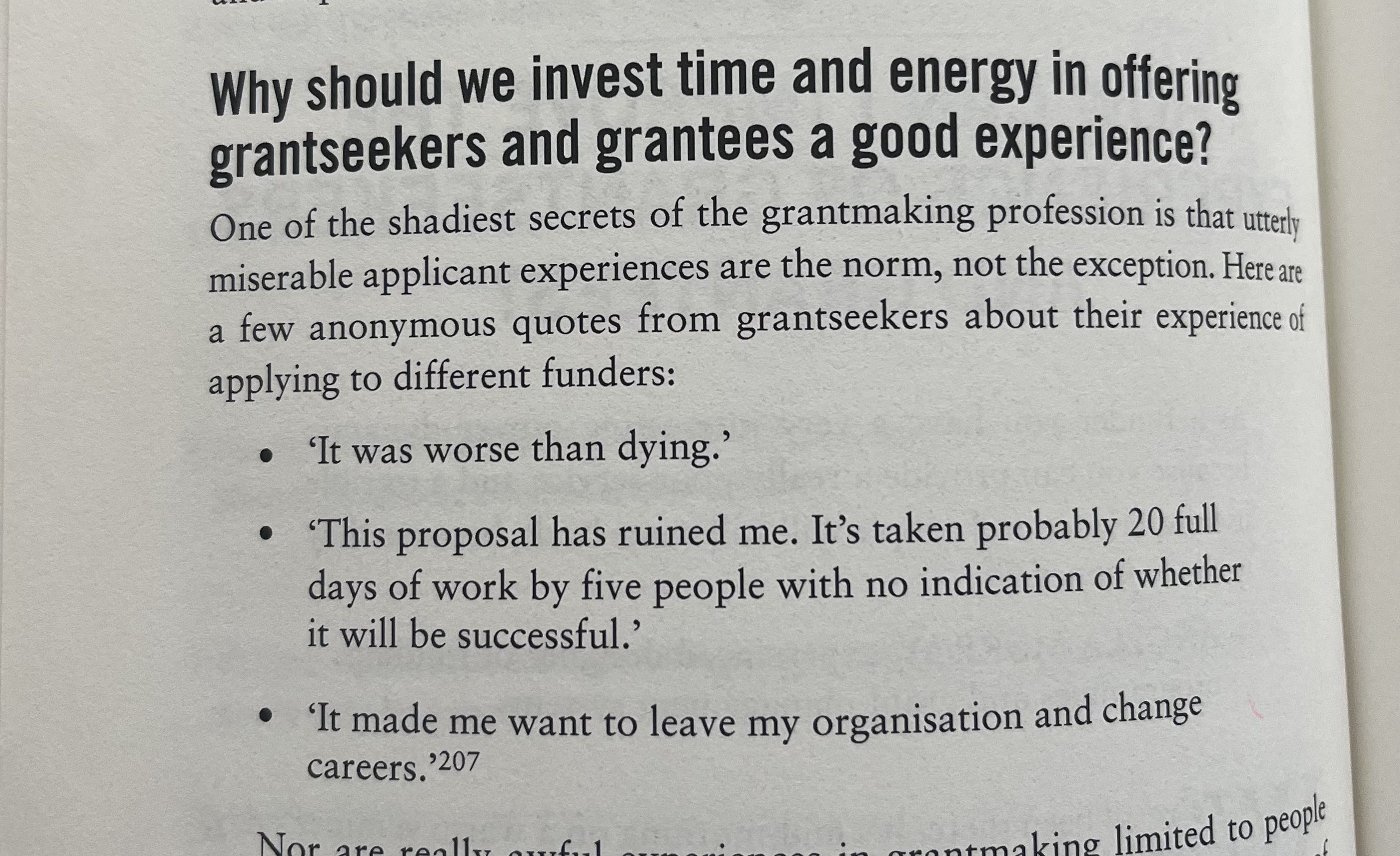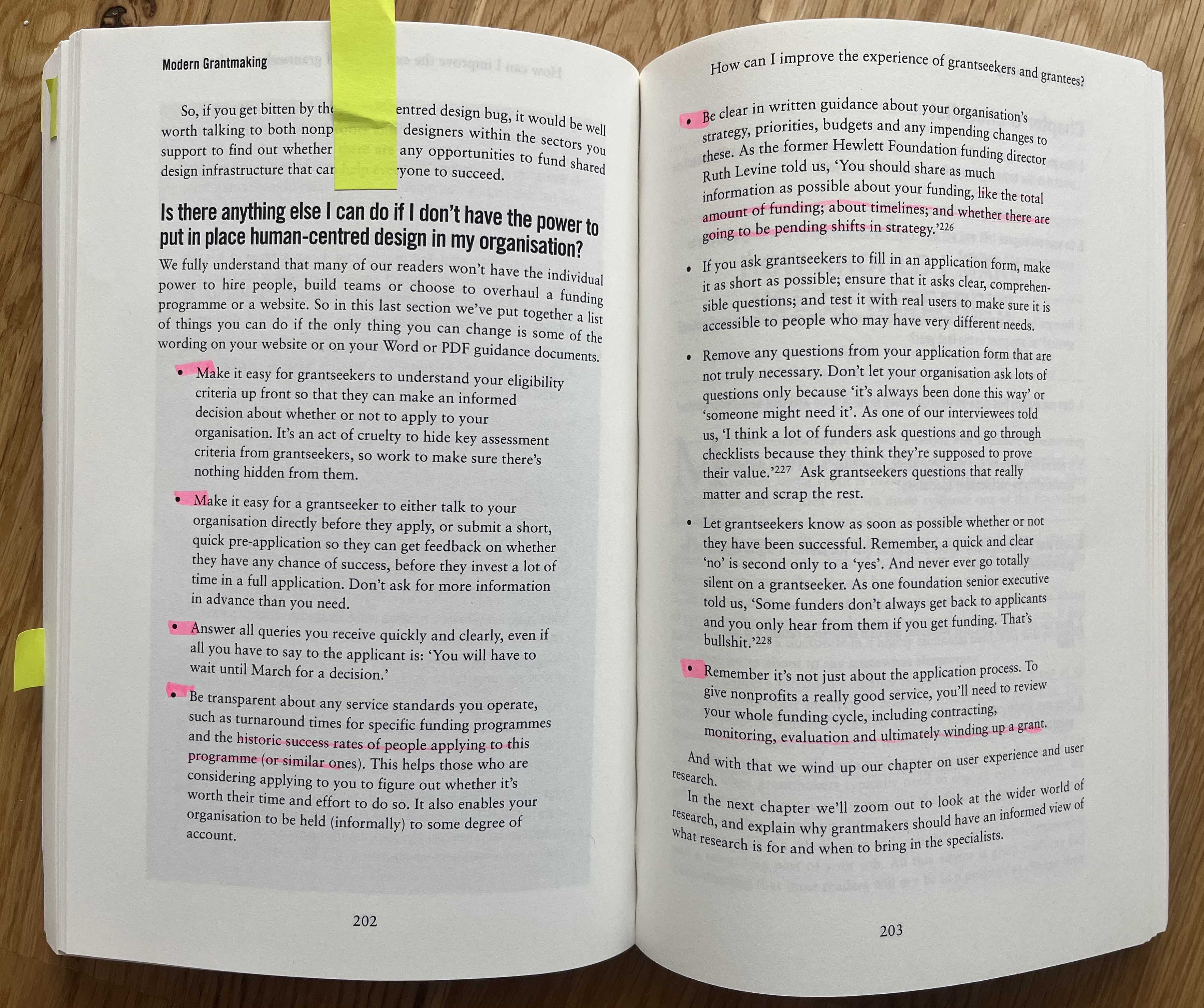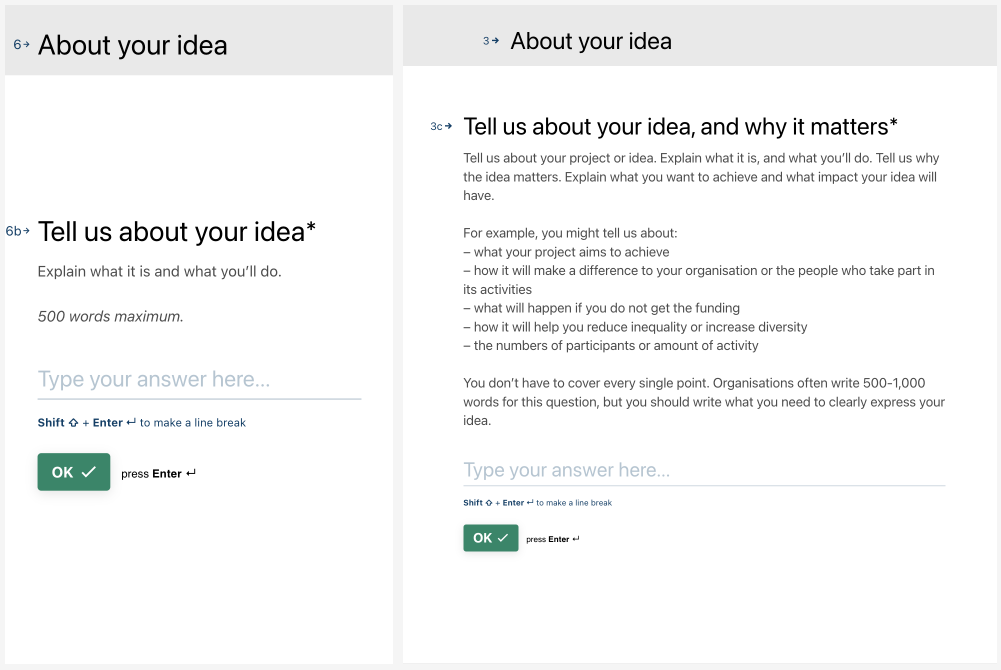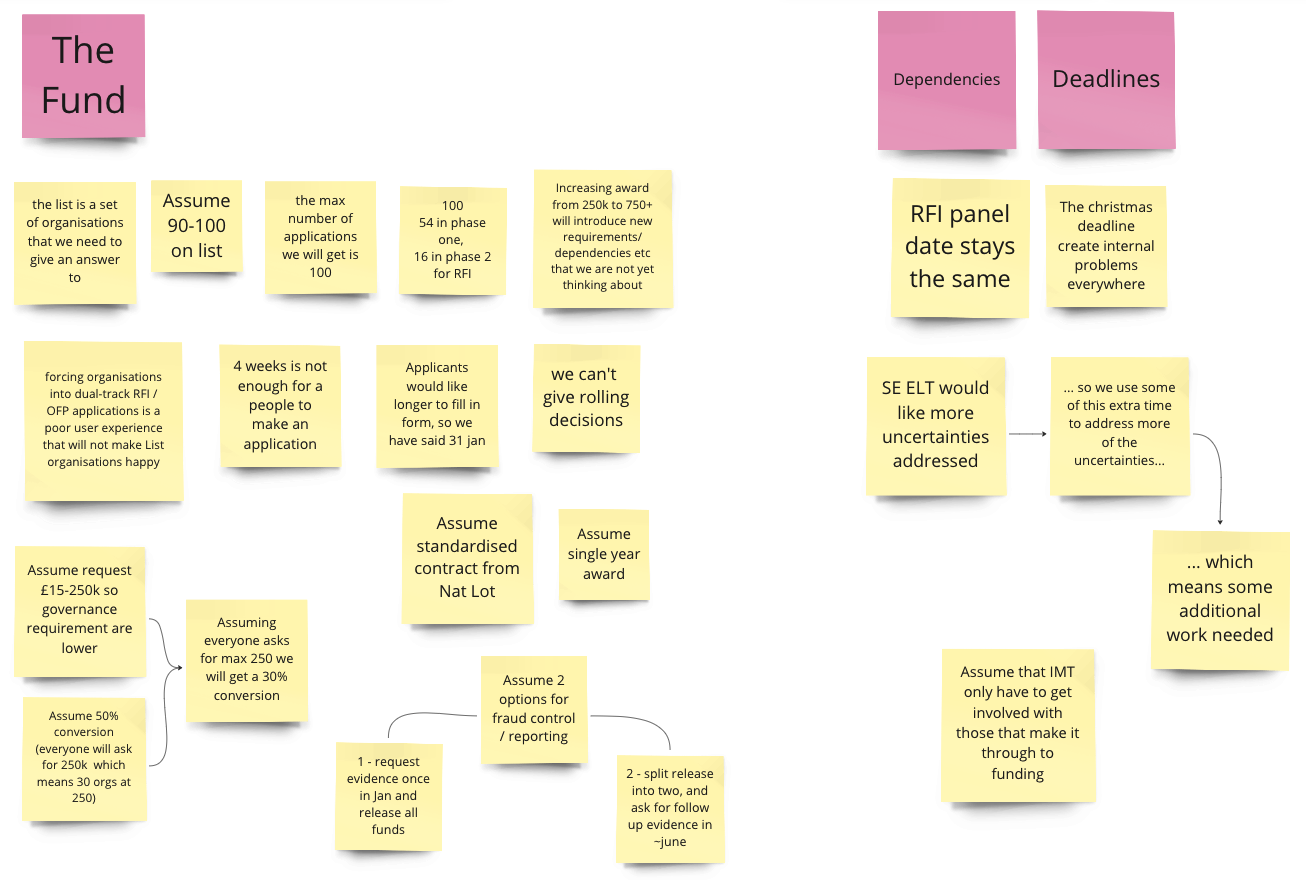Open Funding Pilot
6 - 10 November 2023
As a reminder, we are a team from Sport England and FF Studio working together on the Open Funding Pilot.
It will help Sport England try new ways of working and new funding models to enable them to get more people in underserved communities active. It will also show the wider Sport England organisation what delivery looks like if we shorten feedback cycles.
Weeknotes are a quick recap of the important things a team has done each week, what we’ve learned, and what’s the plan for next week. They also help us work in the open.
This is the end of week 6.
1. Next prototype.
Last week, our user research revealed some solid opportunities to make improvements:
- We need to be clearer about what the fund is for from the start - reducing inequalities.
- Our more “open” questions need clearer guidance on why we ask them, what a good answer looks like, and what we don’t need to see.
- The funding process doesn’t always match the reality of grantseeker’s work, as it expects everything from budget to idea is fully worked out before they start. Finding ways to increase flexibility for organisations makes a big difference.
We are also trying to find ways to make things from Modern Grantmaking real, these pages resonated with us…
 Modern Grantmaking: “This proposal has ruined me” - grantseekers talking about their experience of applying for funding.
Modern Grantmaking: “This proposal has ruined me” - grantseekers talking about their experience of applying for funding.
 Modern Grantmaking page 202-203: ways to make better, clearer content in your form.
Modern Grantmaking page 202-203: ways to make better, clearer content in your form.
So based on all this feedback we made a lot of improvements to our prototype form to make questions clearer and give better examples and guidance. This makes forms work better for grantseekers and increases the likelihood that SE gets good quality data that they can make good quality decisions with.
 Our form before and after we made improvements driven by our user research.
Our form before and after we made improvements driven by our user research.
Here’s the detail of other improvements we’ve made:
- We’ve added a step at the start of the form where we ask the grantseeker for their email address. We want to ensure that the pilot remains constrained to only organisations on “The List”, so we’ll add some logic soon that checks if the email address provided is on a pre-defined list of emails - if it isn’t we will reject the applicant.
- Demographics: We have removed the checklist of characteristics and turned it into an open question. Originally this question was presented in this way so we could ‘auto-decline’ grantseekers who didn’t match anyone, but actually the answers need nuance. We also saw from testing that presenting a checklist encourages orgs to tick everything that might only loosely apply, meaning the data isn’t very accurate. By changing to an open question, and along with the rest of the application, we believe we’ll get a clearer picture of what the grantseeker is doing.
- We turned “max 250k” into “15-250k range” and added a line about lottery rules to make it clearer.
- We swapped the order of the Target Community and About Your Idea sections after user research showed grantseekers would write about the idea in the earlier community question. So: start with the idea.
- We compressed the Tell us about your idea and Why your idea matters questions into a single question to make it consistent with the audio/video option. We found that having a more open question, but with clearer examples and guidance on what we are expecting, better accommodates different mental models of different grantseekers and projects. We also added more context on what we’re looking for to both the Your Idea section and to the question.
- We also combined the questions about “knowing you’re getting results” and “showing us the results” because user research indicated some confusion.
- We removed word counts/limits, because in user research grantseekers felt the length was indicating how important the question was in decision making. Also because we want to learn if we get answers that we couldn’t predict. Instead we are indicating on some questions what grantseekers typically do (as a nudge), but making it clear that they should write what they need to to express the idea clearly.
- We’ve clarified that the accessibility and long-term questions may be part of the decision making process: “This question helps us understand your idea better, and may make your application stronger”
- We made it clearer that the answer to the Action on Climate question does not affect our decision to award funding
- Section names now make it clearer that we want to know about the target community/idea/measuring success/etc for this idea you want the funding for (rather than for your wider organisation)
2. We gave ELT an update
We updated ELT on our project. We only had 20 mins so it was fast - we can send the slide deck to anyone who wants to see it.
In short - we are striking a tricky balance with our scope and timelines.
On one hand we would like to offer more than 250k - but on the other hand we need to minimise the work IMT and other teams would need to do. On one hand we want to give “The List” a quick answer process - but on the other hand they need enough time to write their applications for funding. On one hand we want the pilot to open and shut cleanly - but on the other hand we need to dovetail neatly with RFI’s timelines.
Some of these are common tradeoffs that every project needs to consider when it is exploring an emerging space in a transforming organisation that sits in a landscape of some regulatory complexity.
Identify the opportunities, find the balance, make the tradeoffs, move forward, keep learning.
So next we need to be really clear with everyone about what assumptions we are working to, what our plan is, and how and when we are communicating that. That’s happening with IMT and RFI next week.
Most importantly, we want to make sure we learn good lessons from this work and share them in a calm and timely way. Because of that it’s now clear that extending timelines is a good idea. ELT gave us the green light to do that. So we are working through the practicalities of doing that and getting it all signed off. We’ve made a clearer roadmap and list of assumptions. We will share those more widely next week.
 Early work on our project assumptions.
Early work on our project assumptions.
In summary: parts like the form have a good shape now, other parts like the assumptions are in progress, and we’re moving and improving quickly on all of it.
It was great to have time with ELT to share what we’ve been doing. For those not there please remember our show and tells are open invite! Please ask to come along.
Next week:
Next week looks exciting:
- Designing the rest of the user journey beyond the form: invite emails, supporting documentation, the update emails after submission
- Continuing to develop the assessment model
- Exploring how to bring the data inside the SE org
- Continue the conversation about communications with Joanne in RFI
- And as outlined above, we are looking at how our scope and timescale need adjusting to respond to the things we’ve learned this week.